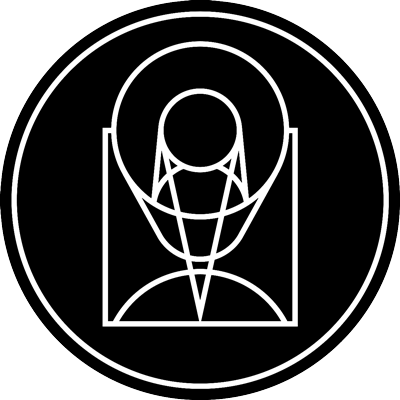- Image Type
- Subject
- Spectral Band
- Locale
- Image Channels
- Image Coordinates
- Telescope Facility
- Publisher
Scroll to load additional results for large searches. Thumbnails may rearrange to maintain sort order until page is fully populated.
Carina Nebula
![]()
![]()
VLT image of the Carina Nebula in infrared light
Colour-composite image of the Carina Nebula, revealing exquisite details in the stars and dust of the region. Several well known astronomical objects can be seen in this wide field image : to the bottom left of the image is one of the most impressive binary stars in the Universe, Eta Carinae,...
Carina Nebula
![]()
![]()
The Carina Nebula
Colour-composite image of the Carina Nebula, revealing exquisite details in the stars and dust of the region. Several well known astronomical objects can be seen in this wide field image : to the bottom left of the image is one of the most impressive binary stars in the Universe, Eta Carinae,...
Eta Carinae
![]()
![]()
Eta Carinae and the Keyhole Nebula
Eta Carinae and the Keyhole Nebula, part of the larger Carina Nebula, imaged with the ESO 3.6-metre telescope on La Silla.
Eta Carinae
![]()
Eta Carinae
The Eta Carinae region, as seen in the ESO/SERC (J) survey plates.
Carina Nebula
![]()
![]()
The Carina Nebula
The Carina Nebula is a large bright nebula that surrounds several clusters of stars. It contains two of the most massive and luminous stars in our Milky Way galaxy, Eta Carinae and HD 93129A. Located 7500 light years away, the nebula itself spans some 260 light years across, about 7 times the...
Carina Nebula
![]()
![]()
The Carina Nebula *
Colour-composite image of the Carina Nebula, revealing exquisite details in the stars and dust of the region. Several well known astronomical objects can be seen in this wide field image : to the bottom left of the image is one of the most impressive binary stars in the Universe, Eta Carinae,...
Eta Carinae
![]()
K-band image of the unstable star Eta Carinae
Eta Carinae is one of the heaviest and most luminous stars known. Its mass probably exceeds 100 solar masses, and the star is about 4 million times brighter than the Sun. Such a massive star has a comparatively short lifetime of about 1 million years; when measured in the cosmic timescale,...
Carina Nebula
![]()
![]()
Carina Nebula western wall (with adaptive optics)
A 50-trillion-km (33-trillion-mile, or 5 light-year) long section of the western wall in the Carina Nebula, as observed with adaptive optics on the Gemini South telescope. This mountainous section of the nebula reveals a number of unusual structures including a long series of parallel ridges...
Carina Nebula
![]()
![]()
Carina Nebula Western Wall (without adaptive optics)
A 50-trillion-km (33-trillion-mile, or 5 light-year) long section of the western wall in the Carina Nebula, observed without adaptive optics.
Carina Nebula
A raw image from one of the four detectors of HAWK-I
A raw image from one of the four detectors of HAWK-I. The images taken with astronomical instruments are always in intensity scale: the information on the colours is obtained by taking exposures through different glass filters, in this case the near-infrared H filter. This image was used,...
Carina Nebula
![]()
![]()
ESO’s VLT reveals the Carina Nebula's hidden secrets
This broad image of the Carina Nebula, a region of massive star formation in the southern skies, was taken in infrared light using the HAWK-I camera on ESO’s Very Large Telescope. Many previously hidden features, scattered across a spectacular celestial landscape of gas, dust and young stars,...
Carina Nebula
![]()
![]()
The cool clouds of Carina
Observations made with the APEX telescope in submillimetre-wavelength light at a wavelength of 870 µm reveal the cold dusty clouds from which stars form in the Carina Nebula. This site of violent star formation, which plays host to some of the highest-mass stars in our galaxy, is an ideal arena...
Carina Nebula
![]()
![]()
The Carina Nebula imaged by the VLT Survey Telescope
The spectacular star-forming Carina Nebula has been captured in great detail by the VLT Survey Telescope at ESO’s Paranal Observatory. This picture was taken with the help of Sebastián Piñera, President of Chile, during his visit to the observatory on 5 June 2012 and released on the occasion of...
Eta Carinae
![]()
![]()
Digitized Sky Survey image of Eta Carinae Nebula
This image is a colour composite made from exposures from the Digitized Sky Survey 2 (DSS2). The field of view is approximately 4.7 x 4.9 degrees.
Carina Nebula
![]()
![]()
Panoramic view of the WR 22 and Eta Carinae regions of the Carina Nebula*
This spectacular panoramic view combines a new image of the field around the Wolf–Rayet star WR 22 in the Carina Nebula (right) with an earlier picture of the region around the unique star Eta Carinae in the heart of the nebula (left). The picture was created from images taken with the Wide...
Carina Nebula
![]()
![]()
The Carina Nebula around the Wolf–Rayet star WR 22
This image of part of the Carina Nebula was created from images taken through red, green and blue filters with the Wide Field Imager on the MPG/ESO 2.2-metre telescope at ESO’s La Silla Observatory in Chile. It is centred on the unusual hot massive young star WR 22, a member of the rare class...
Trumpler 14
![]()
![]()
Widest adaptive optics view of the open star cluster Trumpler 14
This impressive image of the open cluster known as Trumpler 14 was obtained with the Multi-conjugate Adaptive optics Demonstrator (MAD) mounted on ESO’s Very Large Telescope. The cluster, which is found to be only 500 000 years old — a blink of an eye in the Universe’s history — resides at the...
Carina Nebula
![]()
![]()
Trumpler 14 in the Carina Nebula
This image of the Carina Nebula shows the position of the Trumpler 14 cluster of stars.
Carina Nebula
The Carina Nebula with OmegaCAM
This raw image, straight from the OmegaCam instrument on the VST, was used together with many others to produce the iconic photo of the Carina Nebula (eso1250). The images taken with astronomical instruments are always in intensity scale: the colour information is obtained by taking exposures...
Carina Nebula
![]()
![]()
First Light for SPECULOOS Southern Observatory’s Europa Telescope
This first light image from the Europa telescope at the SPECULOOS Southern Observatory (SSO) shows the heart of the Carina Nebula. The SSO is installed at ESO’s Paranal Observatory in the vast Atacama Desert, Chile, and consists of four 1-metre planet-hunting telescopes. The project’s...
Carina Nebula
![]()
![]()
Digitized Sky Survey image of Eta Carinae Nebula
This image is a colour composite made from exposures from the Digitized Sky Survey 2 (DSS2). The field of view is approximately 4.7 x 4.9 degrees.
Carina Nebula
![]()
![]()
The Carina Nebula in infrared light
This spectacular image of the Carina nebula reveals the dynamic cloud of interstellar matter and thinly spread gas and dust as never before. The massive stars in the interior of this cosmic bubble emit intense radiation that causes the surrounding gas to glow. By contrast, other regions of the...
Carina Nebula
![]()
![]()
A wider view of the Carina Nebula
This wider coverage area reveals even more stars from the crowded neighbourhood surrounding the Carina nebula. Captured by VISTA, the world’s largest infrared survey telescope, we witness the dramatic evolution of this living stellar city, where stars form and perish side by side.
Carina Nebula
![]()
![]()
Region R45 in the Carina Nebula
This image was taken by the MUSE instrument, mounted on ESO’s Very Large Telescope and shows the region R45 within the Carina Nebula, 7500 light-years away. The massive stars within the star formation region slowly destroy the pillars of dust and gas from which they are born.
Carina Nebula
![]()
![]()
Mystic Mountain
This craggy fantasy mountaintop enshrouded by wispy clouds looks like a bizarre landscape. But it is indeed a pillar of gas and dust, three light-years tall, which is being eaten away by the brilliant light from nearby bright stars. The pillar is also being assaulted from within, as infant...
Carina Nebula
![]()
![]()
Bok Globule in the Carina Nebula
The prominent dark patches, in the central region and to the right of the image are a so called Bok globule: these are isolated and relatively small dark nebulae, containing dense dust and gas. These objects are still subjects of intense research as their structure and density remains somewhat...
Eta Carinae
![]()
Eta Carinae
This new image of the luminous blue variable Eta Carinae was taken with the NACO near-infrared adaptive optics instrument on ESO's Very Large Telescope, yielding an incredible amount of detail. The images clearly shows a bipolar structure as well as the jets coming out from the central star....
Carina Nebula
![]()
![]()
Star cluster Trumpler 14
This pillar is part of the massive star cluster Trumpler 14, within the Carina Nebula, 7500 light-years away. The image was taken by the MUSE instrument, mounted on ESO’s Very Large Telescope.
Eta Carinae
![]()
Highest resolution image of Eta Carinae
This image represent the best image of the Eta Carinae star system ever made. The observations were made with the Very Large Telescope Interferometer and could lead to a better understanding of the evolution of very massive stars.
Carina Nebula
![]()
![]()
Region R37 in the Carina Nebula
This image was taken by the MUSE instrument, mounted on ESO’s Very Large Telescope and shows the region R37 within the Carina Nebula, 7500 light-years away. The massive stars within the star formation region slowly destroy the pillars of dust and gas from which they are born.
Carina Nebula
![]()
![]()
Region R44 in the Carina Nebula
This image was taken by the MUSE instrument, mounted on ESO’s Very Large Telescope and shows the region R44 within the Carina Nebula, 7500 light-years away. The massive stars within the star formation region slowly destroy the pillars of dust and gas from which they are born.
Carina Nebula
![]()
![]()
Region R18 in the Carina Nebula
This image was taken by the MUSE instrument, mounted on ESO’s Very Large Telescope and shows the region R18 within the Carina Nebula, 7500 light-years away. The massive stars within the star formation region slowly destroy the pillars of dust and gas from which they are born.
Eta Carinae
![]()
High-Velocity ejecta in Eta Carinae
Around 1841, Eta Carinae became one of the brightest stars in the sky when it underwent a giant outburst. This 10-second image was obtained in red light on May 22, 1998, with the coated 8.2-m VLT mirror. It beautifully demonstrates the detailed structure of the material that was ejected on that...
Eta Carinae
![]()
![]()
![]()
Chandra Rewinds Story of Great Eruption of the 1840s
A time-lapse sequence of Eta Carinae allows astronomers to watch as the stellar eruption continues to expand into space at speeds up to 4.5 million miles per hour.
NGC 3324
![]()
![]()
![]()
Carina Nebula (NIRCam Narrowband Filters)
Image of the Cosmic Cliffs, a region at the edge of a gigantic, gaseous cavity within NGC 3324, captured by Webb’s Near-Infrared Camera (NIRCam). This image shows invisible near-infrared wavelengths of light that have been translated into visible-light colors.
NGC 3324
![]()
![]()
![]()
Carina Nebula Jets (NIRCam Narrowband Filters)
Dozens of previously hidden jets and outflows from young stars are revealed in this new image of the Cosmic Cliffs from NASA’s James Webb Space Telescope’s Near-Infrared Camera (NIRCam). The Cosmic Cliffs, a region at the edge of a gigantic, gaseous cavity within NGC 3324, has long intrigued...
NGC 3324
![]()
![]()
![]()
NIRCam Compass Image of the “Cosmic Cliffs” in Carina
What looks much like craggy mountains on a moonlit evening is actually the edge of a nearby, young, star-forming region NGC 3324 in the Carina Nebula. Captured in infrared light by the Near-Infrared Camera (NIRCam) on NASA’s James Webb Space Telescope, this image reveals previously obscured...
NGC 3324
![]()
![]()
![]()
Combined NIRCam and MIRI Compass Image of the “Cosmic Cliffs” in Carina
Astronomers using NASA’s James Webb Space Telescope combined the capabilities of the telescope’s two cameras to create a never-before-seen view of a star-forming region in the Carina Nebula. Captured in infrared light by the Near-Infrared Camera (NIRCam) and Mid-Infrared Instrument (MIRI), this...
NGC 3324
![]()
![]()
![]()
NIRCam Image of the “Cosmic Cliffs” in Carina
What looks much like craggy mountains on a moonlit evening is actually the edge of a nearby, young, star-forming region NGC 3324 in the Carina Nebula. Captured in infrared light by the Near-Infrared Camera (NIRCam) on NASA’s James Webb Space Telescope, this image reveals previously obscured...
NGC 3324
![]()
![]()
![]()
Combined NIRCam and MIRI Image of the “Cosmic Cliffs” in Carina
Astronomers using NASA’s James Webb Space Telescope combined the capabilities of the telescope’s two cameras to create a never-before-seen view of a star-forming region in the Carina Nebula. Captured in infrared light by the Near-Infrared Camera (NIRCam) and Mid-Infrared Instrument (MIRI), this...
Eta Carinae
![]()
![]()
![]()
Giant Star Yields New Clues About Turbulent Life
This Hubble Space Telescope image of the giant, petulant star Eta Carinae is yielding new surprises.
Trumpler 14
![]()
![]()
Hubble Unveils a Tapestry of Dazzling Diamond-Like Stars
Some of the Milky Way's "celebrity stars" — opulent, attention-getting, and short-lived — can be found in this Hubble Space Telescope image of the glittering star cluster called Trumpler 14. It is located 8,000 light-years away in the Carina Nebula, a huge star-formation region in our galaxy....
Carina Nebula Pillar
![]()
![]()
![]()
Cosmic Ice Sculptures: Dust Pillars in the Carina Nebula
NASA's Hubble Space Telescope has imaged the Carina Nebula Pillar, located 7,500 light-years away.
HH 901
![]()
![]()
![]()
Wide View of 'Mystic Mountain'
NASA's Hubble Space Telescope wide-field visible image of HH 901 and HH 902 in the Carina Nebula.
HH 901
![]()
![]()
![]()
Hubble Captures Spectacular "Landscape" in the Carina Nebula
NASA's Hubble Space Telescope has imaged HH 901 and HH 902 located 7,500 light-years away.
HH 901
![]()
![]()
![]()
Hubble's Wide View of 'Mystic Mountain' in Infrared
NASA's Hubble Space Telescope wide-field infrared image of HH 901 and HH 902 in the Carina Nebula.
HH 901
![]()
![]()
![]()
Visible View of Pillar and Jets HH 901/902
NASA's Hubble Space Telescope has imaged HH 901 and HH 902 in visible light.
HH 901
![]()
![]()
![]()
Infrared View of Pillar and Jets HH 901/902
NASA's Hubble Space Telescope has imaged HH 901 and HH 902, located 7,500 light-years away, in infrared light.
Eta Carinae
![]()
![]()
![]()
WFPC2 Image of Eta Carinae
NASA's Hubble Space Telescope has imaged Eta Carinae which is located 7,500 light-years away.
Carina Nebula
![]()
![]()
![]()
The Carina Nebula: Star Birth in the Extreme
In celebration of the 17th anniversary of the launch and deployment of NASA's Hubble Space Telescope, a team of astronomers is releasing one of the largest panoramic images ever taken with Hubble's cameras. It is a 50-light-year-wide view of the central region of the Carina Nebula where a...
Dark Globula in NGC 3372
![]()
![]()
![]()
Dark Globule and Stellar Jet in the Carina Nebula
The tadpole-looking feature in the center of this image is a nodule of cold hydrogen gas laced with dust. The image offers circumstantial evidence that a young star is being born inside the placental cloud. The diagonal feature may be caused by twin jets of gas blasting away from the hidden...
Carina Nebula
![]()
![]()
![]()
Star-Forming Region in the Carina Nebula: Detail 1
A towering "mountain" of cold hydrogen gas laced with dust is the site of new star formation in the Carina Nebula. The great gas pillar is being eroded by the ultraviolet radiation from the hottest newborn stars in the nebula.
Carina Nebula
![]()
![]()
![]()
Star-Forming Region in the Carina Nebula: Detail 2
A close-up look at the peak of one of these "pillars of creation" reveals unequivocal evidence that stars are being born inside the columns. A pencil-like streamer of gas shoots out in both directions from the pillar and plows into surrounding gas like a fire hose hitting a wall of sand. The...
Carina Nebula
![]()
![]()
![]()
Carina Nebula Details: Great Clouds
These great clouds of cold hydrogen resemble summer afternoon thunderheads. They tower above the surface of a molecular cloud on the edge of the nebula. So-called "elephant trunk" pillars resist being heated and eaten away by blistering ultraviolet radiation from the nebula's brightest stars.
Carina Nebula
![]()
![]()
![]()
Carina Nebula Details: The Caterpillar
A Bok globule nicknamed the "caterpillar" appears at the right. Its glowing edge indicates that it is being photoionized by the hottest stars in the cluster. It has been hypothesized that stars may form inside such dusty cocoons. The top of the Keyhole Nebula, the most prominent feature...
Carina Nebula
![]()
![]()
![]()
Carina Nebula Details: Pillar
An approximately one-light-year tall "pillar" of cold hydrogen towers above the wall of the molecular cloud. The 2.5-million-year-old star cluster called Trumpler 14 appears at the right side of the image. A small nugget of cold molecular hydrogen, called a Bok globule, is silhouetted...
Carina Nebula
![]()
![]()
![]()
The Carina Nebula: Star Birth in the Extreme
In celebration of the 17th anniversary of the launch and deployment of NASA's Hubble Space Telescope, a team of astronomers is releasing one of the largest panoramic images ever taken with Hubble's cameras. It is a 50-light-year-wide view of the central region of the Carina Nebula where a...
Carina Nebula
![]()
![]()
![]()
Mosaic of Carina Nebula Region
A 2003 Hubble Space Telescope image of Carina Nebula, NGC 3372.
Carina Nebula
![]()
![]()
![]()
Stellar Winds and Radiation From Eruptive Star Eta Carinae Sculpt Gas and Dust
A small portion of the rough-and-tumble neighborhood of swirling dust and gas near one of the most massive and eruptive stars in our galaxy is seen in this NASA Hubble Space Telescope image. This close-up view shows only a three light-year-wide portion of the entire Carina Nebula, which has...
Carina Nebula
![]()
![]()
![]()
Light and Shadow in the Carina Nebula (NGC 3372)
Previously unseen details of a mysterious, complex structure within the Carina Nebula (NGC 3372) are revealed by this image of the "Keyhole Nebula," obtained with NASA's Hubble Space Telescope. The picture is a montage assembled from four different April 1999 telescope pointings with Hubble's...

































































